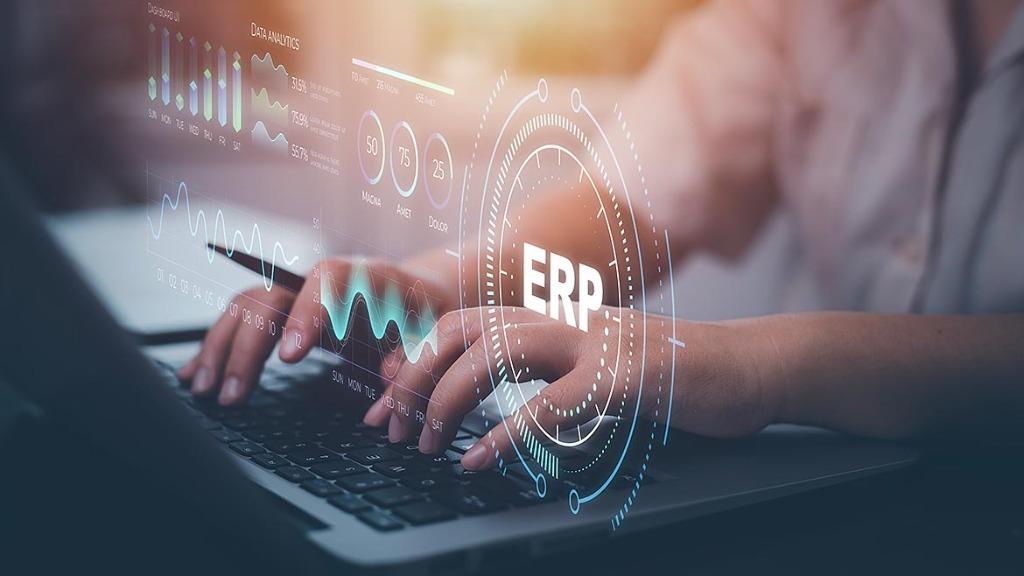All integrated under a single platform is managing accounting, inventory, human resources, CRM, and supply-chain operations. Sounds impossible? Well, that’s what an ERP system does.
Today, ERP software is no longer a luxury for the Fortune 500s. It has become a strategic necessity for not just the bigger firms, but right down to small businesses that want to streamline their processes, make them more efficient, or gain that edge. Here is a deep dive into ERP software: why it matters, how it works, and how to get it working for the most business value.
Why ERP Software Matters
Centralization of Data, Smarter Decisions
ERP systems consolidate data from every department into a single source of truth. Such a thing allows accurate, real-time reporting and analytics across the business.
Operational Efficiency
Routine, repetitively performed tasks and workflow automation are what ERP does. It minimizes human error and allows some of the staff to spend their time on higher-level activities.
Scalability
It would grow with your business as it matures. For instance, cloud ERP, NetSuite, SAP Business One, and Odoo support greater flexibility in scalability.
Key Benefits of Using an ERP Software Include
- Value-added Collaboration: Eg everyone has the same data and no silos.
- Quick Reporting: Financial and operational reports are generated in seconds.
- Inventory Management: Real-time stock tracking across multiple locations.
- Customer Satisfaction: Happy clients thanks to effective order processing and speedy deliveries.
- Readiness for Compliance: Most ERP systems are made to meet industry regulations.
Once You Understand the Need of Your Business, Proceed to the Next Step on Choosing and Implementing ERP Software.
Step 1: Understand Your Business Needs.
Pinpoint pain areas in existing processes. Better accounting? Excellent supply chain visibility? Enriched CRM?
Step 2: Set Objectives and Budget.
Define success regarding outcome-for example, reduce inventory holding costs by 20% or reduce order processing time by 50%, and then decide how much you are willing to spend on it.
Step 3: Create your Shortlist for ERP Vendor Selection
Some of the most popular include:
- SAP Business One is the best ERP software for manufacturing and logistics
- Microsoft Dynamics 365 is very scalable and great for integrations
- Oracle NetSuite is best for service-based businesses
- Odoo is open-source and very cost-effective for small and medium enterprises
Step 4: Request Demos and Trials
Invite end-users to test usability and features. The vendor should simulate real-life scenarios in which their system would be out.
Step 5: Implement and Train
Implementation lasts between 3 and 12 months. Invest in thorough staff training and change management support.
Real Case Study: Transformation of a Small Retailer
Bella Naturals, a small organic cosmetics retailer, was very much islands with regards to disjointed systems for inventory, sales, and customer experience. Upon embracing Odoo ERP, they were able to achieve the following:
- Order fulfillment sped up by 40 percent
- 30 percent decrease in inventory loss
- CRM integration for real-time customer communication
“We went from spreadsheets and guesswork to a fully streamlined operation in under six months,” says founder Lina Flores.
Actionable Tips for ERP Success
- Start small, think big: Start with the core modules and then add features as needed.
- Get stakeholders on board: Make sure there is input from every department for adoption.
- Customize with care: Too many customizations can create maintenance headaches.
- Review regularly: Conduct quarterly assessments of operations to optimize the system.
Common Pitfalls to Avoid
1. Forgetting the Needs Analysis
If you jump into an ERP solution without truly knowing what you need, none will fit.
2. Underestimating Training
An ERP tool will only be as good as the people back of it, so invest in continual training.
3. Over-Customizing
Stick to out-of-the-box unless a customization can show meaningful payback.
4. Neglecting Data Quality
Poor data being migrated into the new system makes it impossible for every function to work seamlessly from day one.
Future Trends for ERP Software
🤖 AI and Machine Learning:
Expect smarter forecasting, predictive maintenance, and even automated decision-making.
☁️ Cloud First:
On-premise is already waning as demand for mobility and low upfront costs arises.
🚀 Industry-Based:
Proliferation of special solutions for niches, including construction, healthcare, and e-commerce.
🌐 IoT and Real-Time:
From smart factories to real-time fleet tracking, ERP will increasingly integrate with connected devices.
Conclusion: The Pillar of Scalable Success
The ERP system is not just any digital tool; it is an investment in the future of your firm. This will enable businesses to grow smarter, faster, and stronger through unifying operations, enhancing visibility, and enabling better decision-making.
Important Takeaway:
- ERP systems centralize data and automate work processes.
- Software selection entails much self-reflection and research.
- Real-world outcomes mean better customer service, decreased cost, and faster growth.
Ready to overhaul your business operation? Check out ERP vendors, compare features, and take the first step toward digital transformation today.




